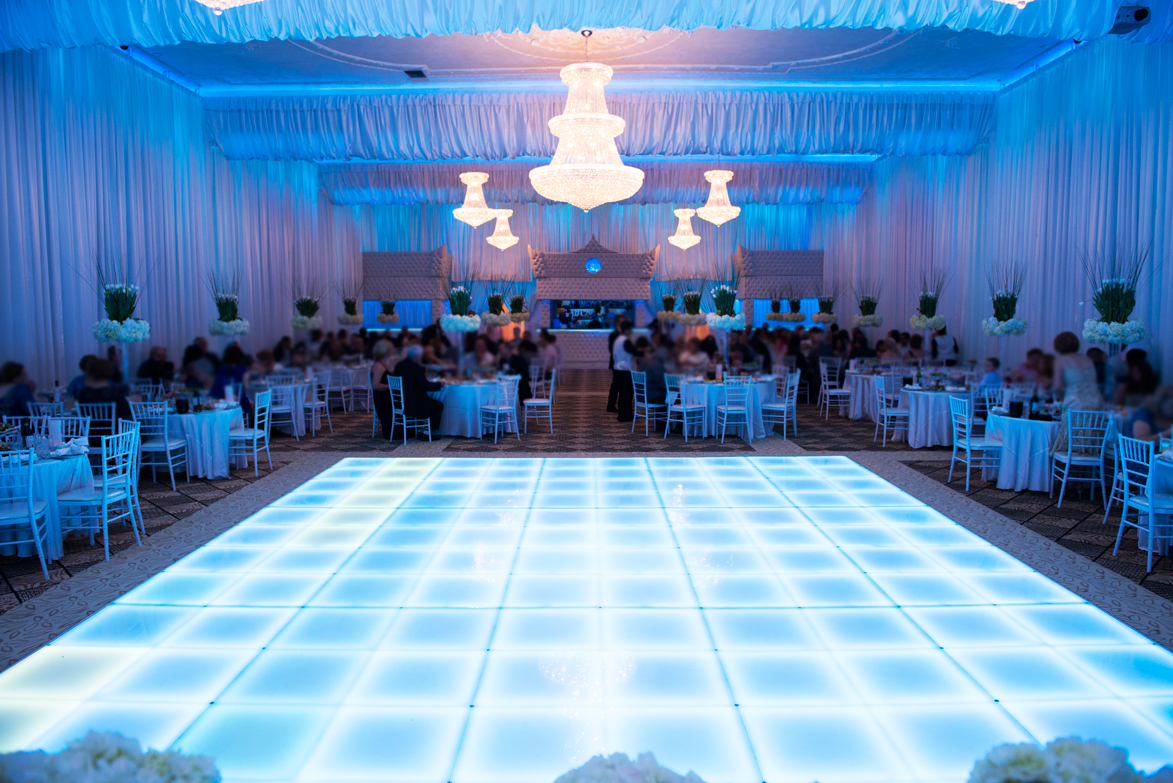|
Money Dance
The money dance, dollar dance, or apron dance is an event at some wedding receptions in various cultures. During a money dance, male guests pay to dance briefly with the bride, and sometimes female guests pay to dance with the groom. Sometimes guests are told that the money will be used for the bride and groom's honeymoon or to give them a little extra cash with which to set up housekeeping. Europe Poland The money dance may have originated in Poland around the beginning of the 20th century. The dance takes place some time after the first dance, often once guests have had a chance to have a few drinks. The best man or MC or the disc jockey announces the event. Customarily, the best man begins dancing with the bride, pinning money onto her wedding gown or putting it into a purse, which she carries especially for the purpose, or into the pockets of an apron she dons over her gown, especially for this dance. In a more contemporary version of this custom, the dance includes ... [...More Info...] [...Related Items...] OR: [Wikipedia] [Google] [Baidu] |
Wedding Reception
A wedding reception is a party usually held after the completion of a marriage ceremony as hospitality for those who have attended the wedding, hence the name reception: the couple ''receive'' society, in the form of family and friends, for the first time as a married couple. Hosts provide their choice of food and drink, although a wedding cake is popular. Entertaining guests after a wedding ceremony is traditional in most societies, and can last anywhere from half an hour to many hours or even days. Most wedding receptions are made in the evening for dinner; however, the couple may opt for a luncheon, brunch, or even afternoon tea. Ultimately the married couple chooses the details and location of the reception. In some cultures, separate wedding celebrations are held for the bride's and groom's families. Before receptions – a social event that is structured around a receiving line, and usually held in the afternoon, with only light refreshments – became popular, wedding ... [...More Info...] [...Related Items...] OR: [Wikipedia] [Google] [Baidu] |
Groomsmen
A groomsman or usher is one of the male attendants to the groom in a wedding ceremony and performs the first speech at the wedding. Usually, the groom selects close friends and relatives to serve as groomsmen, and it is considered an honor to be selected. From his groomsmen, the groom usually chooses one to serve as best man. For a wedding with many guests, the groom may also ask other male friends and relatives to act as ushers without otherwise participating in the wedding ceremony; their sole task is ushering guests to their seats before the ceremony. Ushers may also be hired for very large weddings. In a military officer's wedding, the roles of groomsmen are replaced by swordsmen of the sword honor guard. They are usually picked as close personal friends of the groom who have served with him. Their role includes forming the traditional saber arch for the married couple and guests to walk through. The first recorded use of the word ‘groomsmen’, according to the Oxford Eng ... [...More Info...] [...Related Items...] OR: [Wikipedia] [Google] [Baidu] |
Wedding Traditions And Customs
A wedding is a ceremony where two people are united in marriage. Wedding traditions and customs vary greatly between cultures, ethnic groups, religions, countries, and social classes. Most wedding ceremonies involve an exchange of marriage vows by a couple, presentation of a gift (offering, rings, symbolic item, flowers, money, dress), and a public proclamation of marriage by an authority figure or Celebrant (Australia), celebrant. Special wedding garments are often worn, and the ceremony is sometimes followed by a wedding reception. Music, poetry, prayers, or readings from religious texts or literature are also commonly incorporated into the ceremony, as well as Wedding superstitions, superstitious customs. Common elements across cultures Some cultures have adopted the traditional Western custom of the white wedding, in which a bride wears a white wedding dress and veil. This tradition was popularized through the marriage of Queen Victoria. Some say Victoria's choice of ... [...More Info...] [...Related Items...] OR: [Wikipedia] [Google] [Baidu] |


